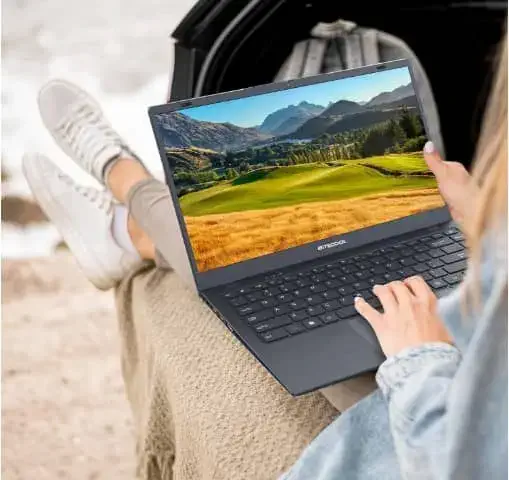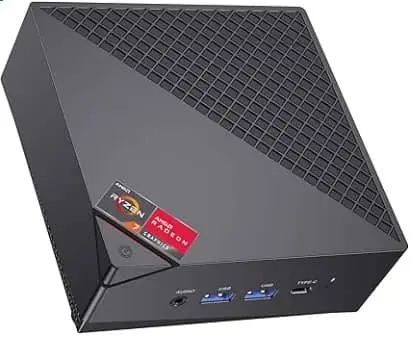
In the world of computing, performance is a top priority for many users. From gamers seeking higher frame rates to professionals needing powerful machines for tasks like video editing and 3D rendering, the desire for better performance is universal. The development of external GPUs (eGPUs) has provided a significant boost to graphics performance for many users, leading to the question: could there be a similar solution for CPUs? In this article, we will delve into the concept of external CPUs, explore how CPUs work, and discuss why external CPUs remain an elusive dream and solve the confusion about “Is External CPU processor Exist”
Table of Contents
Introduction
The quest for better performance in laptops and PCs has led to significant innovations in computing hardware. Among these, the development of external GPUs (eGPUs) stands out as a breakthrough, allowing users to enhance their device’s graphics performance without needing to upgrade the internal GPU. This advancement has sparked curiosity about the potential for external CPU processors. In theory, an external CPU could provide a significant performance boost for various tasks. But is this concept feasible, and if not, why?
How CPUs Work
The Basics of CPU Operation
The Central Processing Unit (CPU) is often referred to as the brain of a computer. It performs the fundamental tasks that allow a computer to operate, including executing instructions from programs, performing calculations, and managing data flow between various components. The CPU is essential for almost every operation a computer performs, from booting up the operating system to running complex applications.
CPU Architecture
CPUs are composed of several key components that work together to execute instructions. These components include:
- Cores: Modern CPUs have multiple cores, which are individual processing units capable of executing instructions. A single-core CPU can handle one instruction at a time, while multi-core CPUs can handle multiple instructions simultaneously, significantly improving performance.
- Threads: Threads are sequences of programmed instructions that the CPU can execute. With technologies like Simultaneous Multi-Threading (SMT) or Hyper-Threading, a single core can handle multiple threads concurrently, further enhancing performance.
- Cache: CPUs have a small amount of high-speed memory called cache, which stores frequently accessed data and instructions to speed up processing.
- Clock Speed: The clock speed, measured in gigahertz (GHz), determines how many cycles a CPU can perform per second. Higher clock speeds generally result in faster performance.
The Role of Cores and Threads
The number of cores and threads in a CPU significantly impacts its performance. For gamers, fast CPU cores combined with a powerful graphics card yield high frame rates and smooth gameplay. Professionals, on the other hand, require many CPU cores and threads for tasks like video editing, rendering, and running virtual machines. The ability to handle multiple tasks simultaneously makes multi-core CPUs essential for modern computing.
The Nature of CPUs
The Integral Role of CPUs in System Architecture
Unlike GPUs, which can be externalized with relative ease, CPUs are deeply integrated into the entire PC system. Here are some reasons why:
CPU and RAM Integration
CPUs rely heavily on accessing system RAM (Random Access Memory) to execute instructions and manage data. RAM is located on the motherboard, close to the CPU, to minimize latency and maximize performance. Externalizing the CPU would require an external motherboard with its own CPU socket and RAM, essentially creating an external PC rather than just an external CPU.
Boot Process Dependency
The boot process of a computer is heavily dependent on the CPU. When you turn on your computer, the CPU initializes and begins executing instructions from the BIOS or UEFI firmware, which in turn initializes other hardware components and loads the operating system into RAM. Without a functioning CPU and RAM, the computer cannot boot up. This dependency underscores the central role of the CPU in the overall system architecture.
External GPU Processors vs. External CPU Processors
The Rise of External GPUs
External GPUs (eGPUs) have gained popularity in recent years, particularly among laptop users. An eGPU is an external enclosure that houses a desktop-class graphics card and connects to a laptop or desktop via a high-speed interface, typically Thunderbolt 3 or Thunderbolt 4. This setup allows users to enjoy enhanced graphics performance for gaming, video editing, and other GPU-intensive tasks without needing to upgrade their laptop’s internal GPU.
Comparing GPU and CPU Functions
GPUs and CPUs serve different functions within a computer system:
- GPUs are specialized for parallel processing, making them ideal for rendering graphics, performing complex calculations, and handling large datasets. They have dedicated VRAM (Video RAM) that allows for fast access to graphics data.
- CPUs are general-purpose processors designed to handle a wide range of tasks, including executing instructions from applications, managing data flow, and coordinating the activities of other hardware components. CPUs rely on system RAM for data storage and access.
Technical Challenges of External CPUs
While the concept of an external CPU is intriguing, several technical challenges make it impractical:
- Latency: The CPU needs to access system RAM frequently and quickly. Externalizing the CPU would introduce significant latency, as data would need to travel longer distances between the CPU and RAM, slowing down performance.
- Integration: The close integration of the CPU with other motherboard components, including RAM, chipset, and storage, is crucial for optimal performance. Moving the CPU outside the main system would require a complex and bulky external setup, defeating the purpose of having a compact and portable laptop.
- Power and Cooling: CPUs generate a significant amount of heat and require robust cooling solutions. An external CPU would need its own power supply and cooling system, adding to the complexity and cost of the setup.
Theoretical Possibilities and Limitations

Potential Scenarios for External CPUs
In theory, there are scenarios where an external CPU could be feasible:
- High-Performance Workstations: For users who require extreme performance, an external CPU setup could provide additional processing power. This would involve an external motherboard with its own CPU, RAM, and cooling system, connected to the main system via a high-speed interface.
- Modular Computing: Future advancements in modular computing could lead to more flexible system designs, where components like CPUs, GPUs, and RAM can be easily swapped or upgraded. In such a scenario, an external CPU could become a reality.
Practical Challenges and Latency Issues
Despite these theoretical possibilities, several practical challenges remain:
- Latency: As mentioned earlier, the increased latency from externalizing the CPU would significantly impact performance. High-speed interfaces like Thunderbolt 4 may mitigate some of this latency, but it is unlikely to match the performance of an integrated CPU.
- Cost and Complexity: An external CPU setup would be costly and complex, requiring additional hardware components and robust cooling solutions. This would likely make it impractical for most users.
- Compatibility: Ensuring compatibility between the external CPU and the main system would be challenging, particularly given the wide variety of CPU architectures and motherboard designs.
Conclusion
The idea of an external CPU processor is intriguing, but it remains impractical due to the integral role of CPUs in system architecture. While external GPUs offer a tangible boost for graphics performance, the CPU must remain firmly embedded within the system for optimal performance. If you are looking to improve your laptop’s performance, consider upgrading internal components, adding more RAM, or using an eGPU for enhanced graphics performance.
While the concept of an external CPU processor may not be a reality today, there’s always room for innovation. Future advancements in technology could bring new possibilities that we can’t yet imagine. Until then, let’s appreciate the incredible performance and capabilities of the CPUs inside our laptops and PCs.
References and Further Reading
- “Understanding CPU Architecture,” Techopedia.
- “How CPUs Work: A Beginner’s Guide,” Tom’s Hardware.
- “The Rise of External GPUs,” PC Gamer.
- “Why External CPUs are Impractical,” Computerworld.
- “The Future of Modular Computing,” TechRadar.
- “Exploring the Limits of CPU Performance,” Ars Technica.
This expanded article provides a comprehensive overview of the concept of external CPU processors, covering the technical aspects of CPUs, their role in system architecture, and the challenges associated with externalizing them. The detailed content aims to be accessible and informative for readers seeking to understand why external CPUs remain an elusive dream.
DON’T FOGET THIS
We donate our profit share to the students and children specially girls to continue their education, so if you find this guide helpful so don’t forget those children and buy from our link with 1 day after clicking the button because after 1 day we do not get profit from your click by Amazon or by clicking button form our referral link, you can help by donating to us through contacting us so that we can help them.
You can also find the list of best laptop under $500 on our website or You can also check the information about How to trouble shoot and fix SGIN laptop easily from Our website.




Leave a Reply
You must be logged in to post a comment.